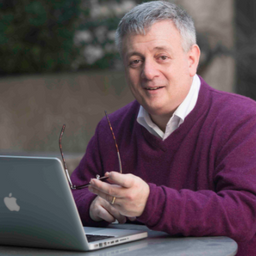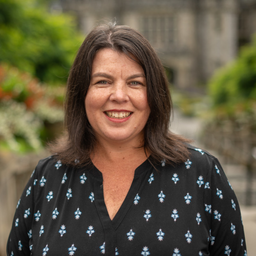Topic: Teaching Strategies
My Session Status
Read-Me First! Guides: A Starting Point for Lessons
Saul Carliner, Concordia University
Track: Learning experience design/ Volet: Conception des expériences d’apprentissage
Type: Case study in innovation:
Name of the case: Read-Me First! Guides: A Starting Point for Lessons
Focus of the case: Design
Background:
When designing an asynchronous online graduate course on mediated communication, the instructor searched for a means of guiding students through the materials, which would be distributed on through a course management system. The resulting choice turned out to be more versatile and would prove helpful in a variety of academic situations.
Problem addressed by the case:
Many asynchronous online courses in universities consist of a collection of resources, such as readings, videos, activities, and assessments. But the relationship among these resources is not always self-evident so providing an explanation benefits the learning process. This contrasts with asynchronous online courses for training, which are usually self-contained as they usually do not involve pre-work (homework) and any assessment or testing can be included in the course package.
Furthermore, for efficiency, most traditional academic courses consist of pre-class readings and problem sets, with in-class lectures usually spent in transmitting content (often duplicating or amplifying the content in the readings) and leaving little if any time to work on problems, much less verify that students mastered the skills and knowledge, much less the individual components of that knowledge and skills. For example, failing to master point A but moving onto points B and C anyway could result in the student failing to master all three points). By moving online, the activities, readings, and lectures could be packaged in smaller chunks, providing opportunities to practice and validate that students have mastered point A before they move onto point B, because the lessons no longer had to be taught as a single three-hour (or similar) lecture.
Solution devised:
The Read-Me-First! Guide, which explains the rationale underlying the lesson and then serves as a concierge through the instruction. The concept is borrowed from a webquest, which is an activity that sends students to various resources on the web to achieve particular learning goals.
The name comes from the Read-Me-First! materials provided with new releases of software and whose title clearly signals what’s first when faced with a large number of files to read. Major sections of the Read-Me-First! Guide include:
- About the lesson
- Objectives covered
- Highlights (so students have a quick overview of the activities in the lesson)
- Sequences of activities, readings, and applications of skills of readings (through activities like discussion board posts, and self-assessments).
Each guide has several such sequence, each addressing a different component skill related to the main objective of the lesson. For example, a lesson for an instructional design course focusing on needs assessment would have separate sequences for each major section of the needs assessment, such as defining the tasks, describing the learners, and identifying characteristic in the environment affecting learning. Students would master one of these components before moving to the next.
Each Read-Me-First guide concludes by asking students to reflect on their learning by taking self-assessments and posting on discussion boards. When guiding students through readings, Read-Me-First guides provide students with guiding questions to help them focus on the key learning points as they pertain to the objectives of the lesson.
Read-Me-First guides also include resources developed by the instructor for that lesson, including forms and templates. Readings, however, are usually distributed separately. When materials are posted on a course management system, their description matches the sequence number and terminology in the description of the Read-Me-First! guides, which helps students find the materials more easily.
Although originally developed for an asynchronous online graduate course, the concept has also been applied in a large asynchronous undergraduate course, face-to-face undergraduate courses, flipped graduate courses, and blended continuing education courses.
Everything Old is New Again!
Tout ce qui est ancien est à nouveau nouveau
Helena Prins and Leva Lee, BCcampus
Track: Learning experience design/ Volet: Conception des expériences d’apprentissage
Type: Innovative teaching, technology or design technique:
Name of the innovation:
Lunchable Learning: a radio show for professional development for the BC post-secondary sector Type of innovation: Teaching, Technology and Design
How the innovation works:
Lunchable Learning uses an “old” and familiar technology, radio, in a new way to deliver professional development using an open platform (web radio and blog site). Our website: https://lunchablelearning.opened.ca/ Our open, free-form and live streaming service: Ds106 Radio https://listen.ds106rad.io/ The pandemic shift and screen fatigue brought our attention to the importance of designing professional development in small digestible chunks for the post-secondary education sector. “Lunchable Learning” offers an easy way to acquire learning and connect with our listeners/learners, informally, via quick tips, highlights and conversation starters and aims to amplify voices and diverse perspectives in B.C. post-secondary education. The goal of “Lunchable Learning” is to provide post-secondary educators with professional learning in a new and fun format that explores and models digital literacy and a curious, experimental mindset. The radio show aims to: Raise awareness of current hot topics in B.C. post-secondary education Feature guest interviews with individuals from the post-secondary sector Highlight tools and tips for teaching and group facilitation Encourage experiments with teaching and learning strategies through challenge activities Provide resources on show topics for listeners to read and explore further
How to apply the technique:
Technology Ds106 Radio platform (web stream), The OpenETC (blog site) Team One Tech Producer – record the shows and monitor audio levels etcl using software Audio Hack and Loopback software and some post-production work Two Radio Show hosts – design program, invite guests, create show content and host Post-production work- Write program show notes for the web blog weekly, prepare recording for sharing on the web blog (including captioning)
The Passion Pedagogy: Unleashing Your Students’ Passion with Real-World Projects
La pédagogie de la passion : déclencher la passion de vos étudiants avec des projets de la vraie vie
Avery Rueb, Vanier College and Michael Canuel, Learn Quebec
Track: Learning experience design: Volet: Conception des expériences d’apprentissage
Type: Innovative teaching, technology or design technique
Name of the innovation: The Passion Pedagogy
Type of innovation: Design
How the innovation works:
The Passion Pedagogy is a project-based approach to learning where students pick any project they are passionate about and they run for a grade. It is gaining popularity all over the world in activities like the Genius Hour and in schools like the online Sora School (https://www.youtube.com/watch?v=TKd2zlqjXSQ).
How to apply the technique:
Last winter term, Avery Rueb (Vanier College) created the course, “Running Your Own Passion Projects”. Here (https://www.youtube.com/watch?v=dIau_2Y_-E4&t=1s) is the video introduction. The feedback was overwhelmingly positive with one student saying, “I like this course because we get to follow our dreams and it’s a lot easier.”
Results from applications of the innovation:
The main benefits are an increased intrinsic motivation for students through agency. The final passion projects are also effective ways for students to show off their “amazing-ness” in university applications and job interviews. In our presentation, we will show examples of students' final presentations as well portfolios that students can use after the class.
The goal of this presentation is to inspire teachers to try out the Passion Pedagogy to create an inclusive environment for learning where students have more choice in their work as well as how their work is assessed. In terms of take-aways, participants will learn to write curriculum for small and big projects where students select and direct their own learning.



